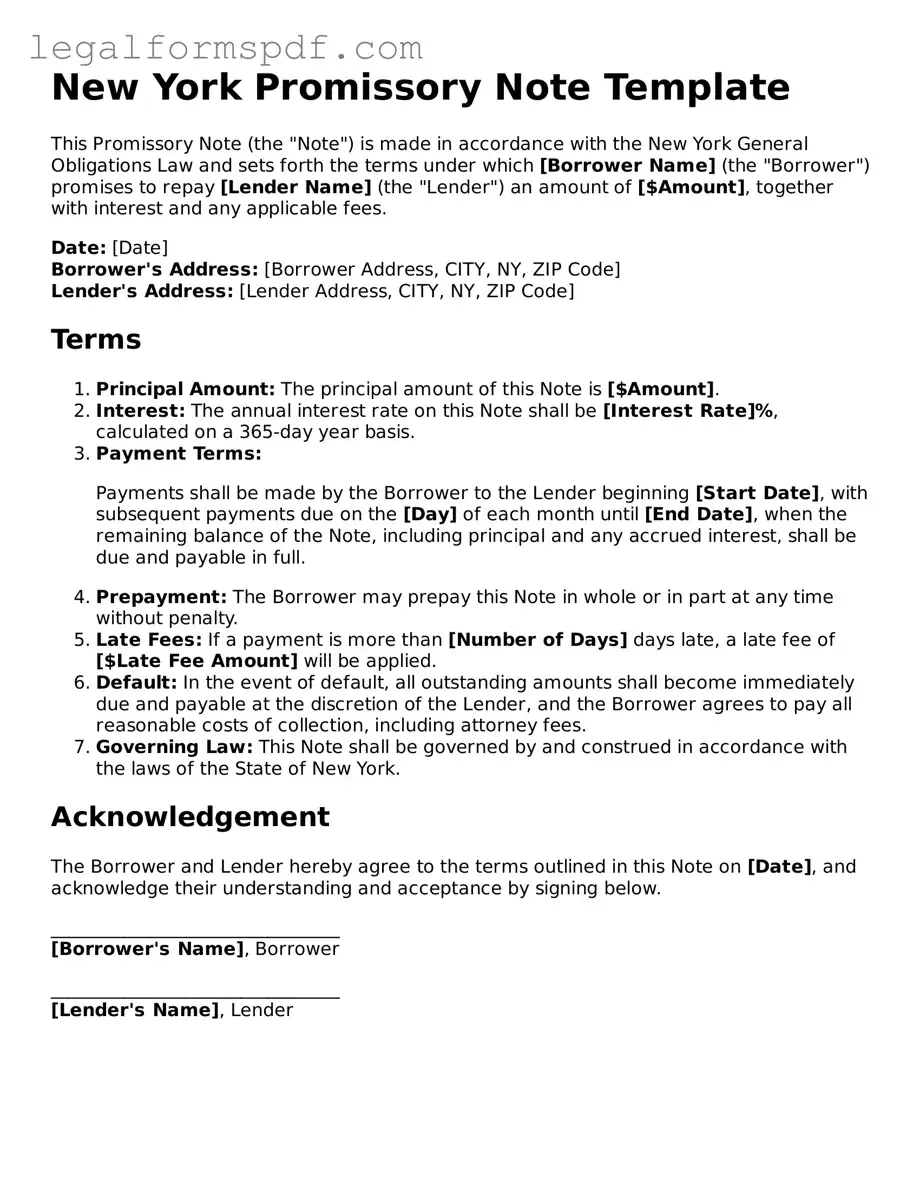The New York Promissory Note form is closely related to several other legal documents used in financial transactions. One such document is the Loan Agreement. Similar to a promissory note, a Loan Agreement is a comprehensive contract that outlines the terms of a loan between two parties. However, the Loan Agreement is more detailed, often specifying collateral, a repayment schedule, and what happens in case of default. The promissory note, by contrast, is usually simpler and more straightforward, focusing on the promise to repay the amount lent.
Another document that shares similarities with the promissory note is the IOU (I Owe You). An IOU is a simple acknowledgment of debt, but unlike a promissory note, it is less formal and might not include specific terms of repayment such as interest rates and due dates. The promissory note, on the other hand, is legally binding and encompasses more detailed information about the loan's conditions.
The Mortgage Agreement is also akin to a promissory note but is specifically secured by the mortgage on real property. Like a promissory note, it outlines the borrower's promise to repay the loan but goes further to attach the property as collateral for the loan. This means that if the borrower defaults, the lender can foreclose on the property to recover the owed amount, a feature that is distinct from unsecured promissory notes.
Debentures are another type of document related to promissory notes, used primarily in corporate finance. They signify a medium to long-term debt instrument but are unsecured, unlike mortgage agreements. Both debentures and promissory notes involve a written promise to pay back a loan, though debentures are more likely to be used by companies and involve larger sums of money and longer repayment periods.
The Bill of Exchange also shares similarities with promissory notes. Both are written orders to pay a certain sum of money to a person at a future date. However, a Bill of Exchange involves three parties (the drawer, the drawee, and the payee), whereas a promissory note typically involves just the borrower and the lender. The international trade commonly uses Bills of Exchange.
Credit Agreements are similar to promissory notes, as they detail the terms under which credit is extended to the borrower by the lender. However, Credit Agreements are generally more complex and often encompass revolving credit lines, such as credit cards or overdraft facilities, unlike the typically lump-sum loan of a promissory note.
The Personal Guarantee is another related document, wherein an individual (the guarantor) agrees to take responsibility for the loan repayment if the original borrower fails to make payments. While not a loan document itself, it is often required by lenders alongside a promissory note to secure the loan, particularly for business loans or large personal loans.
Bonds, especially corporate bonds, are somewhat similar to promissory notes as they represent a loan made by an investor to a borrower (typically corporate or governmental). Both outline a promise to pay back the principal along with interest. However, bonds are traded on markets, can have a wide range of investors, and usually represent a longer-term obligation than promissory notes.
Lastly, Payday Loans can be documented through agreements that resemble promissory notes. These documents outline a short-term, high-interest loan that is intended to be repaid at the borrower's next payday. While both involve a promise to repay, payday loan agreements specifically cater to short-term lending with distinctly higher interest rates and fees than what is typical for promissory notes.
In conclusion, while the New York Promissory Note form is distinctive in its purpose and scope, it shares essential attributes with a variety of other legal and financial documents. Understanding these similarities and differences can help parties involved in financial transactions choose the most appropriate instrument for their needs.
